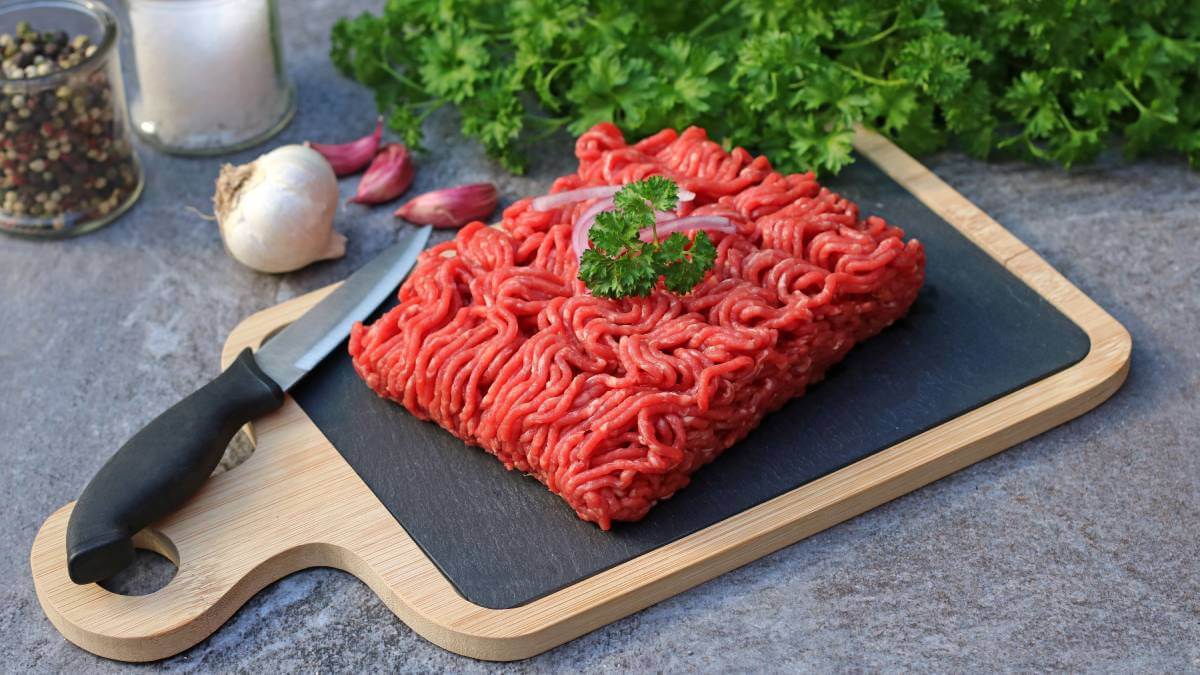Beef mince is a staple protein that can be whipped up into a variety of meals. There are some myths about mince out there, so here’s what and what not to believe.
Colour is a good indicator of freshness
Ever noticed how packaged mince can be bright red on the outside, but brownish in the middle? Stay calm – it’s normal! Oxygen from the air reacts with exposed meat pigments to form a reddish colour. The pigment responsible for beef’s red colour is oxymyoglobin.
The centre of your mince can be brownish due to lack of contact with air. Once exposed, the red colour or ‘bloom’ returns to the meat. Of course, if all your mince looks a bit grey, it’s a sign the meat is past its use-by date. Also, make sure it’s not slimy or too soft, and if it smells bad, it probably is.
It’s only really good for burgers
Making burgers is a common use for beef mince, but that doesn’t mean that it’s all the meat is good for. Lasagne, meatloaf, chilli con carne, bolognese sauce, beef rissoles – mince is the starting point for a lot of family favourites. Many of these meals are great because you can bulk that meat up with whatever else you have lying around in the fridge.
You can cook a lot of beef mince at once
Beef mince lends itself well to batch cooking so many people believe the myth that they can fill a pan to capacity, and it won’t have any problems cooking. However, you really don’t want to crowd your pan when cooking beef mince.
Overcrowding your pan will lead to you steaming the beef instead of browning it and you won’t be able to develop that lovely brown crust you’re looking for in most recipes.
If you have a lot to cook, it’s a good idea to cook it in batches. Remember to allow the pan to heat up again when you add the second batch.
The fat percentage doesn’t really matter
If you always go for the leanest beef mince possible, you could be doing some recipes a disservice. Different fat percentages work better for different dishes. For example, if you’re cooking burgers, you’ll want to look for beef mince with 20 per cent fat.
If you’re making meatloaf, you’re going to want even fattier beef mince so look for 70/30. This is because meatloaf cooks for a long time, so it’s likely going to lose a lot of its moisture before you take it out of the oven.
If you’re mixing pork and beef mince, you can choose the really lean stuff. In general, 90/10 should work well. Since you’ll get so much fat from the pork, it’s not necessary to add even more with the beef.
It’s fine to add beef mince to a cold pan
Most home cooks probably don’t pay as much attention to this rule with beef mince as with something more expensive such as a steak. But you don’t want to add beef mince to a cold pan.
To get the kind of browning you want, first, you should bring the pan up to temperature. Then, add in your oil (if you’re using any), and make sure that comes up to heat next. Finally, you can put your meat in the pan.
Lean beef mince is a healthy option
With the rise in paleo and keto diets, it can feel like the more meat and protein in your diet, the better – regardless of where it comes from. However, we all know the dangers of eating too much red meat.
So, yes, you can continue to enjoy beef mince from time to time, but it definitely shouldn’t be regarded as a health food, even if you opt for the leanest variety available.
You can thaw your minced beef on the counter
Popping your frozen meat on the kitchen counter to thaw is tempting, but it can be dangerous. Defrosting beef mince on the counter at room temperature can promote the growth of harmful bacteria that could potentially cause illness to you, your family or your guests.
Either put the frozen beef mince in the fridge until it’s fully thawed or use the defrost setting on your microwave.
You should stir beef mince as soon as you put it in a pan
Beef mince may be a cheaper cut of meat, but knowing how to cook it properly can help to elevate any meal. You should actually wait about five minutes after putting your beef mince in the pan before you start moving it around. That will give it some nice colour to start with, making for a more flavourful base for whatever you’re making.
How often do you cook with beef mince? Are there any other tips you’d add? Let us know in the comments section below.

